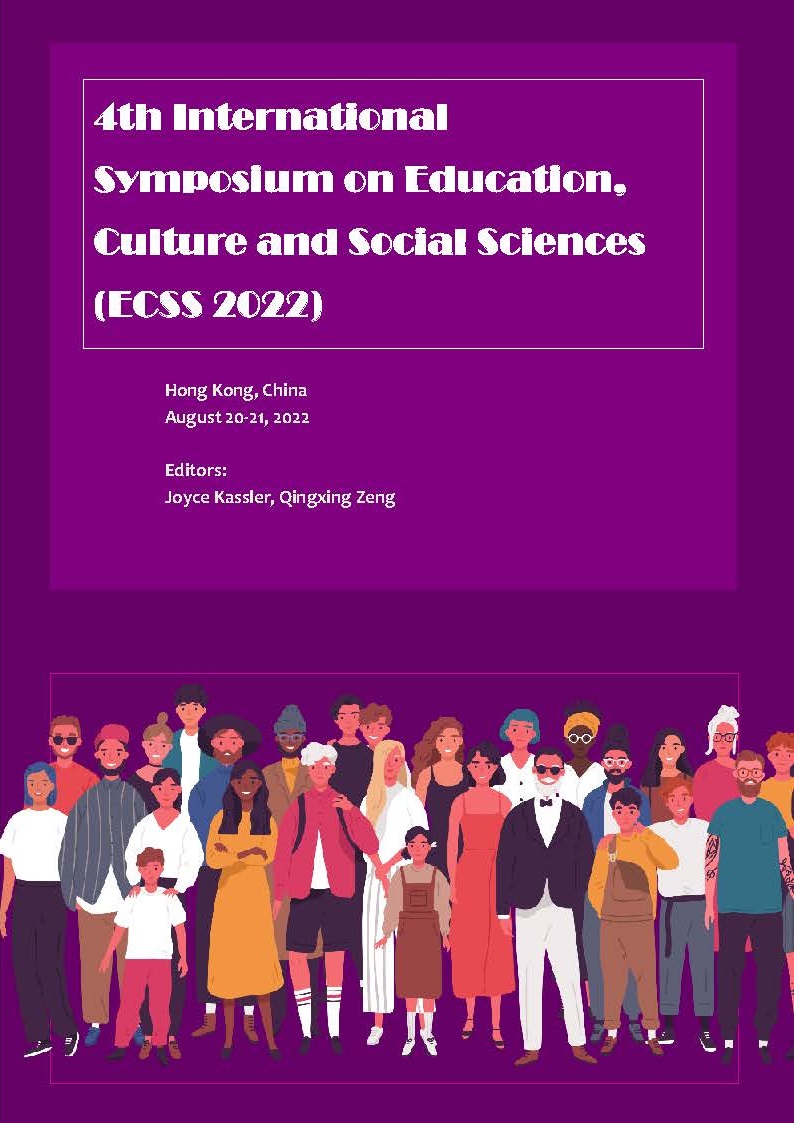Adverse Effects of Loneliness on Students
DOI:
https://doi.org/10.54691/bcpssh.v19i.1730Keywords:
Loneliness, Students, Adverse EffectsAbstract
As a common emotion, loneliness is usually defined as the emotion produced when people do not meet the expectations of interpersonal relationships, which is mainly measured by the UCLA Loneliness Scale. The main theories of loneliness are social needs theory and cognitive processing theory. The former holds that loneliness is a response to unsatisfied social needs, while the latter refers to that loneliness arises because individuals are dissatisfied with the perceived interpersonal relationship. The harm of loneliness to students is mainly reflected in the study, interpersonal relationships, and negative emotion, which will lead to academic procrastination, decreased sense of achievement in learning, decreased social skills, anxiety, and depression. In the future, it is necessary to develop a more objective measurement of loneliness, find out its general mechanism, and conduct intervention research on more student groups.
Downloads
References
Perlman, D., & Peplau, L. A. (1981). Toward a social psychology of loneliness. Personal Relationships, 3, 31–56.
Cacioppo, J. T., Hughes, M. E., Waite, L. J., Hawkley, L. C., & Thisted, R. A. (2006). Loneliness as a specific risk factor for depressive symptoms: cross-sectional and longitudinal analyses. Psychology and aging, 21(1), 140.
Cacioppo, J. T., Hawkley, L. C., & Thisted, R. A. (2010). Perceived social isolation makes me sad: 5-year cross-lagged analyses of loneliness and depressive symptomatology in the Chicago Health, Aging, and Social Relations Study. Psychology and aging, 25(2), 453.
VanderWeele, T. J., Hawkley, L. C., Thisted, R. A., & Cacioppo, J. T. (2011). A marginal structural model analysis for loneliness: implications for intervention trials and clinical practice. Journal of consulting and clinical psychology, 79(2), 225.
Cacioppo, S., Capitanio, J. P., & Cacioppo, J. T. (2014). Toward a neurology of loneliness. Psychological bulletin, 140(6), 1464.
Ernst, J. M., & Cacioppo, J. T. (1999). Lonely hearts: Psychological perspectives on loneliness. Applied and preventive psychology, 8(1), 1-22.
Kearns, A., Whitley, E., Tannahill, C., & Ellaway, A. (2015). Loneliness, social relations and health and well-being in deprived communities. Psychology, health & medicine, 20(3), 332-344.
Wilson, R. S., Krueger, K. R., Arnold, S. E., et al. (2007). Loneliness and Risk of Alzheimer Disease. Arch Gen Psychiatry, 64(2), 234–240.
Chow, S., Wong, F., & Choi, E. (2021). Loneliness in old age, the related factors, and its association with demographics and districts of residence. International Journal of Environmental Research and Public Health, 18(17), 9398.
Feng, W. Z., Liu, Y. P., & Luo, Z. R. (2020). Relationship between academic delay, loneliness and academic self-efficacy in senior students of primary school. Occup and Health, 36(12),4.
Moeller, R. W., & Seehuus, M. (2019). Loneliness as a mediator for college students' social skills and experiences of depression and anxiety. Journal of adolescence, 73, 1-13.
Dziedzic, B., Sarwa, P., Kobos, E., Sienkiewicz, Z., Idzik, A., Wysokiński, M., & Fidecki, W. (2021). Loneliness and Depression among Polish High-School Students. International Journal of Environmental Research and Public Health, 18(4), 1706.
Russell, D., Peplau, L. A., & Ferguson, M. L. (1978). Developing a measure of loneliness. Journal of personality assessment, 42(3), 290-294.
Russell, D., Peplau, L. A., & Cutrona, C. E. (1980). The revised UCLA Loneliness Scale: concurrent and discriminant validity evidence. Journal of personality and social psychology, 39(3), 472.
Russell, D. W. (1996). UCLA Loneliness Scale (Version 3): Reliability, validity, and factor structure. Journal of personality assessment, 66(1), 20-40.
Terrell-Deutsch, B. (1999). The conceptualization and measurement of childhood loneliness. In Rotenberg, K. & Hymel, S. (Eds.). Loneliness in childhood and adolescence. Cambridge: Cambridge University Press, 11-33.
Weiss, R. S. (1987). Reflections on the present state of loneliness research. Journal of Social Behavior and Personality, 2(2).
Zhang, L. Y. (2013). An analysis of mediator variables between academic achievement and children’s loneliness. Journal of Psychological Science, (04),922-927.
Yu, G. L., Xin, Z. Q., & Luo, X. L. (2000). The characteristics of loneliness, peer acceptance and their relation to family functioning. Chinese Journal of Psychology, (01),59-64.
Lei, M. A study on the relationship between the perceived social support, loneliness and learning burnout of rural left-behind junior high school students (in Chinese). Master Dissertation. He-bei: Hebei University, 2021.
Bozoglan, B., Demirer, V., & Sahin, I. (2013). Loneliness, self‐esteem, and life satisfaction as predictors of Internet addiction: A cross‐sectional study among Turkish university students. Scandinavian journal of psychology, 54(4), 313-319.
McKenna, K. Y., Green, A. S., & Gleason, M. E. (2002). Relationship formation on the Internet: What’s the big attraction? Journal of social issues, 58(1), 9-31.
Van den Eijnden, R. J., Meerkerk, G. J., Vermulst, A. A., Spijkerman, R., & Engels, R. C. (2008). Online communication, compulsive Internet use, and psychosocial well-being among adolescents: a longitudinal study. Developmental psychology, 44(3), 655.
Sherman, L. E., Michikyan, M., & Greenfield, P. M. (2013). The effects of text, audio, video, and in-person communication on bonding between friends. Cyberpsychology: Journal of psychosocial research on cyberspace, 7(2).
Rotenberg, K. J. & Hymel, S. (1999). Loneliness in childhood and adolescence. Adolescent Loneliness and Adjustment: A Focus on Gender Difference, (15), 296-322.
Knowles, M. L., Lucas, G. M., Baumeister, R. F., & Gardner, W. L. (2015). Choking under social pressure: Social monitoring among the lonely. Personality and Social Psychology Bulletin, 41(6), 805-821.
Dymowska, A. & Sauer, K. N. (2015). Depression among adolescent--Still actual problem. Family Med Forum, 2, 124-126.
Buysse, D. J. et al. (2008). Relationships between the Pittsburgh Sleep Quality Index (PSQI), Epworth Sleepiness Scale (ESS), and clinical polysomnographic measures in a community sample. Clin, J. (Eds.). Sleep Med, 4, 563-571.
Anderson, C. A. & Bushman, B. J. (2002). Human aggression. Annual Review of Psychology, 53(1), 27.
Bar-Anan, Y., Liberman, N., Trope, Y., & Algom, D. (2007). Automatic processing of psychological distance: evidence from a Stroop task. Journal of Experimental Psychology: General, 136(4), 610.
















